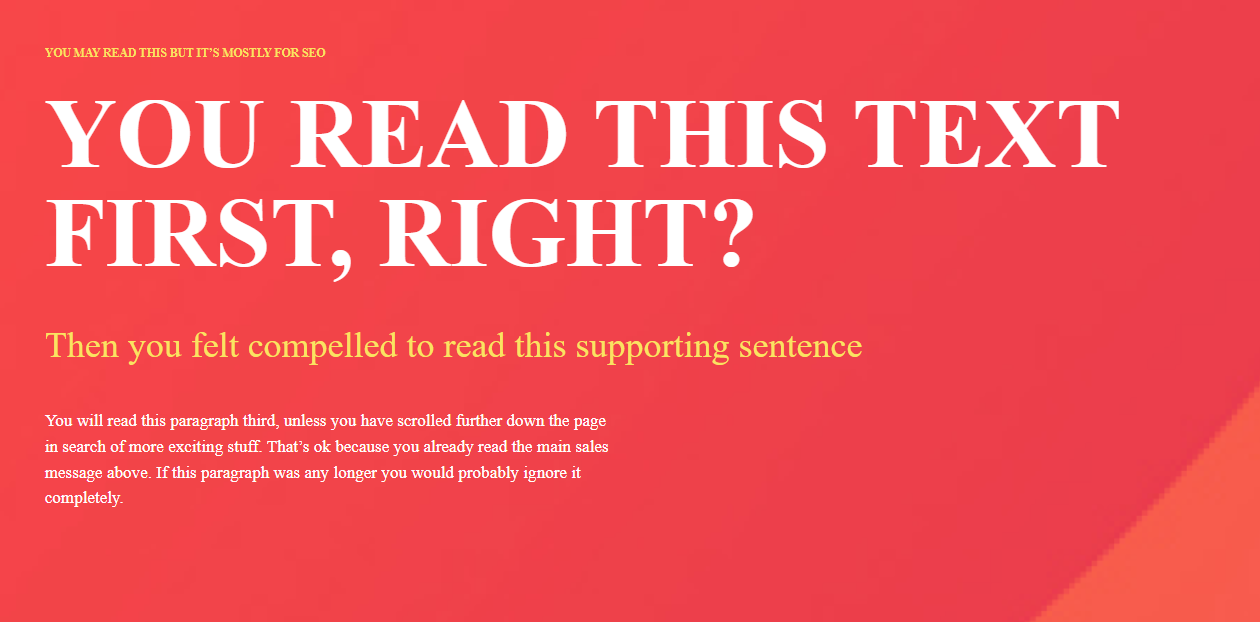Crafting effective website titles requires a delicate balance between SEO strategies, design principles, and user experience (UX) considerations. A well crafted title not only improves your site’s visibility in search engine results but also serves as a crucial element in guiding user behaviour and enhancing overall engagement. We’ll explore best practices for writing website titles, and delve into the importance of heading tags.

Best Practices for Writing Website Titles:
Relevance: Ensure that your title accurately reflects the content of the page. Misleading titles can lead to higher bounce rates and lower user satisfaction.
Clarity: Make the title concise and easy to understand. Users should immediately grasp what the page is about by reading the title.
Keyword Inclusion: Incorporate relevant keywords in the title to improve search engine visibility. However, avoid keyword stuffing, as it can harm user experience and SEO.
Unique: Each page should have a unique title to differentiate it from other pages on your website and improve SEO.
Length: Keep the title within recommended character limits (typically 50-60 characters) to ensure it displays properly in search engine results.
Brand Consistency: Include your brand name if possible, especially on important pages like the homepage or product/service pages.
Engagement: Craft titles that spark interest and encourage users to click through to the page. Using action words or posing questions can be effective.
Testing: A/B test different titles to determine which ones resonate best with your audience and drive higher click through rates.
Importance of Heading Tags (h1, h2, h3):
h1 Tag:
h2, h3, etc. Tags:
SEO Benefits:
Improved Readability and User Experience: Clear, structured headings make content more digestible for users, leading to longer on page engagement and lower bounce rates, which are positive signals for SEO.
Semantic Understanding: Heading tags help search engines understand the context and relevance of different sections of your content, which can lead to better rankings for relevant keywords.
Featured Snippets: Well structured content with clear headings has a higher chance of being featured in rich snippets on search engine results pages (SERPs), increasing visibility and click through rates.
Accessibility: Semantic HTML, including properly used heading tags, improves accessibility for all users, including those using screen readers or other assistive technologies.
Design Considerations:
Font Choice: Select a font that is legible and consistent with your overall website design. Avoid overly decorative fonts that may sacrifice readability.
Font Size and Weight: Ensure that the title stands out on the page by using an appropriate font size and weight. The title should be easily scannable and attention-grabbing.
Colour Contrast: Use colours that provide sufficient contrast between the title and the background to improve readability, especially for users with visual impairments.
Whitespace: Surround the title with ample whitespace to give it breathing room and draw attention to it. Avoid cluttering the area around the title with too many elements.
Alignment and Positioning: Position the title prominently on the page, typically at the top, to make it easily accessible to users. Ensure proper alignment with other elements for a polished look.
UX Considerations:
Consistency: Maintain consistency in the presentation of titles across your website to create a cohesive user experience. Consistent formatting helps users quickly recognize and navigate different sections of your site.
Descriptive: Use titles that accurately describe the content of the page and set clear expectations for users. Ambiguous or vague titles can confuse users and lead to frustration.
Responsive Design: Ensure that titles are displayed effectively across various devices and screen sizes. Responsive design ensures that users can access and read titles seamlessly, regardless of the device they’re using.
Interactive Elements: Incorporate interactive elements, such as hover effects or animations, to make titles more engaging and encourage user interaction. However, ensure that these elements enhance the user experience rather than detract from it.
Accessibility: Design titles with accessibility in mind by ensuring they are perceivable, operable, and understandable for all users. Use semantic HTML and provide alternative text for images or interactive elements associated with the title.
By considering these design and UX principles alongside SEO best practices, you can create website titles that not only improve search engine visibility but also enhance user engagement and satisfaction. Check out our example page for header best practices: https://sixtwo.agency/what-did-you-see-first/